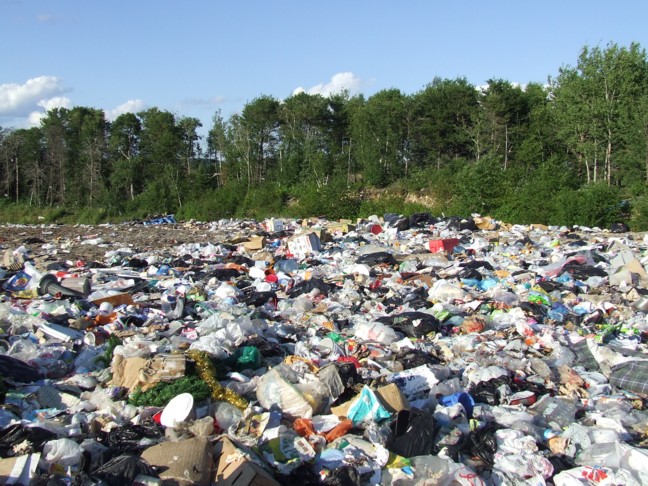MAY 7, 2023 – Friday is garbage pickup day in our fair village. “Garbage,” of course, is “trash talk” for more refined terms describing the same crap: “waste” and “refuse.” I’ve always been amused by civilization’s relationship with its detritus. Anthropologists, for example, treat ancient dump sites as gold mines of information about the societies that dumped their fish bones, cracked arrowheads and broken pottery into pits on the edge of town—not unlike the way it was done in my hometown in more recent times. We non-anthropologists, on the other hand, are disgusted by garbage, though we insist on generating hundreds of millions of tons of it annually—a little shy of a ton per American. But what a gift to future anthropologists!
The neat thing about waste is that the disgust it generates dissipates upon refuse removal: out of sight (and smell), it’s wholly out of mind. What’s more disgusting than two day’s worth of skillet grease, dinnerplate scraps, tomato sauce jar lids, dripping watermelon rinds, water-logged coffee grounds, ever-ripening banana peels, ice cream containers softened by melted chocolate remains that evaded the rounded scoop, all co-mingled inside a garbage bag contained by a kitchen receptacle? But lift out the bag and pull its red drawstring tight. Carry it forth to the alley bin, lift the cover and drop the bag with a resounding “thump.” Task completed. Once the bag is off your hands, it’s off your mind.
Friday, however, brings the constant grind of garbage collection trucks—in far too many numbers. Why so many? Years ago, our town council decided that to save wear and tear on the alley surfaces, refuse collection would be put up for bid. The winning bidder would then take only two weekly runs down each alley—first one way, then the opposite. But this sensible approach unleashed an uproar. A cranky group of residents stormed the next council meeting to yell, “Foul! Your process doesn’t pass the smell test! You’ve usurped our freedom of choice!” The council backed down so that folks could select their own hauler among half a dozen that serve the area. Instead of one truck up and down the alley each week, we have six trucks; 12 runs instead of two. I say, that stinks . . . until the last truck passes, whereupon, I’m back to . . . out of sight (and earshot), out of mind.
Back in the fifties and early sixties it was a time of anything goes . . . to the dump. I remember my dad backing his Super Buick up to the garage monthly and loading the trunk with newspapers, two garbage cans filled with household waste, empty paint cans and (almost) empty glass jars with skull-and-cross-bone labels and hauling it all to the dump just north of town. He’d then back the Buick to the edge of the pit and heave-ho the trunk load of garbage into the communal sea of waste. “Good riddance,” he’d say, as he pulled away from the edge of doom.
As Rachel Carlson and other environmental scientists would later tell us, “good riddance” of our waste was “bad riddance” for our planet. But despite mighty improvements in our management of MSW (“municipal solid waste”) our staggering volume of non-recycled, solid waste—particularly plastics—threatens the environment today as much as ever. If the trash itself is out of sight, its effects are everywhere in degradation of air, water and earth.
We consume way too much “stuff” that’s way over-packaged and over-discarded, generating way, way too much waste. And we’ve become so clever at removing our garbage from sight and smell, we’ve obscured the volume we generate—and disguised our deficiency in conserving, recycling and composting.
What we need is more trash talk. We hear plenty from politicians and their surrogates, but unfortunately, it’s a lot of garbage. We have no time to waste. In 2024, refuse to recycle elected officials who won’t talk trash in an effort to clean up our home, the great planet earth.
Subscribe to this blog and receive notifications of new posts by email.
© 2023 by Eric Nilsson
